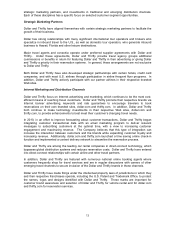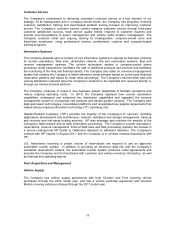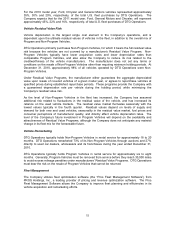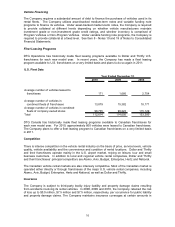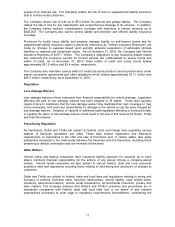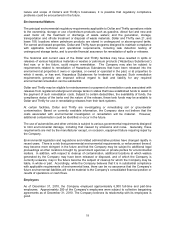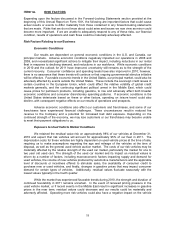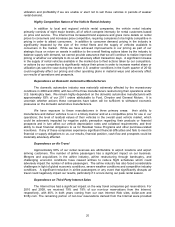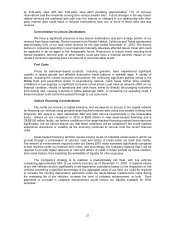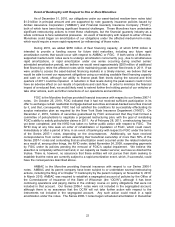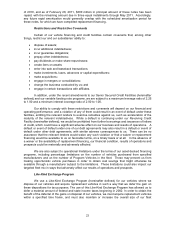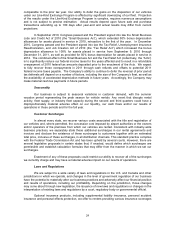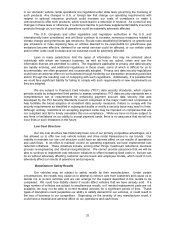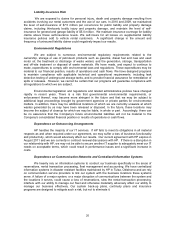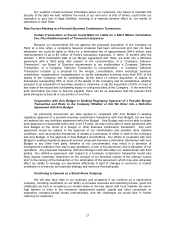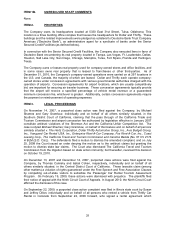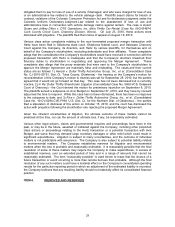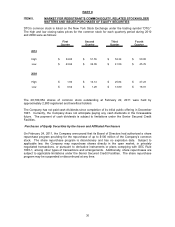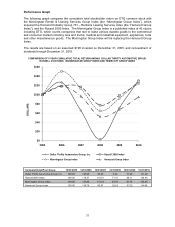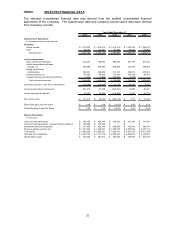Thrifty Car Rental 2010 Annual Report Download - page 24
Download and view the complete annual report
Please find page 24 of the 2010 Thrifty Car Rental annual report below. You can navigate through the pages in the report by either clicking on the pages listed below, or by using the keyword search tool below to find specific information within the annual report.of 2010, and as of February 28, 2011, $300 million in principal amount of these notes has been
repaid, with the remaining amount due in three equal installments through May 2011. Accordingly,
any future rapid amortization would generally overlap with the scheduled amortization period for
these notes, for which we have completed replacement financing.
Restrictions and Restrictive Covenants
Certain of our vehicle financing and credit facilities contain covenants that, among other
things, restrict our and our subsidiaries’ ability to:
x dispose of assets;
x incur additional indebtedness;
x incur guarantee obligations;
x prepay other indebtedness;
x pay dividends or make share repurchases;
x create liens on assets;
x enter into sale and leaseback transactions;
x make investments, loans, advances or capital expenditures;
x make acquisitions;
x engage in mergers or consolidations;
x change the business conducted by us; and
x engage in certain transactions with affiliates.
In addition, under the recent amendments to our Senior Secured Credit Facilities (hereinafter
defined) and our variable funding note programs, we are subject to a maximum leverage ratio of 2.25
to 1.00 and a minimum interest coverage ratio of 2.00 to 1.00.
Our ability to comply with these restrictions and covenants will depend on our financial and
operating performance, and a violation of any of them could result in an event of default under these
facilities, entitling the relevant lenders to exercise remedies against us, such as acceleration of the
maturity of the relevant indebtedness. While a default is continuing under our Revolving Credit
Facility (hereinafter defined), we would be prohibited from further borrowings and issuances of letters
of credit, which could have a significant adverse effect on our business and results of operations. A
default or event of default under one of our debt agreements may also result in a default or event of
default under other debt agreements, with similar adverse consequences to us. There can be no
assurance that the relevant lenders would waive any such violation or that a waiver or replacement
financing would be available to us on favorable terms, on a timely basis or at all. In the absence of
a waiver or the availability of replacement financing, our financial condition, results of operations and
prospects could be materially and adversely affected.
We are also subject to operational limitations under the terms of our asset-backed financing
programs, including percentage limitations on the number of vehicles purchased from specified
manufacturers and on the number of Program Vehicles in the fleet. These may prevent us from
making opportunistic vehicle purchases in order to obtain cost savings that might otherwise be
available through a manufacturer subject to the limitations. These limitations could also impact our
targeted fleet mix in ways that adversely affect our results of operations and prospects.
Like-Kind Exchange Program
We use a Like-Kind Exchange Program (hereinafter defined) for our vehicles where we
dispose of our vehicles and acquire replacement vehicles in such a way that we defer the gain on
these dispositions for tax purposes. The use of this Like-Kind Exchange Program has allowed us to
defer a material amount of federal and state income taxes beginning in 2002. In order to obtain the
benefit of the deferral of the gains on disposal of our vehicles, we must acquire replacement vehicles
within a specified time frame, and must also maintain or increase the overall size of our fleet
23


